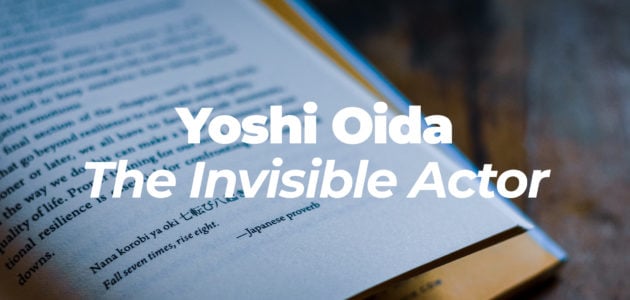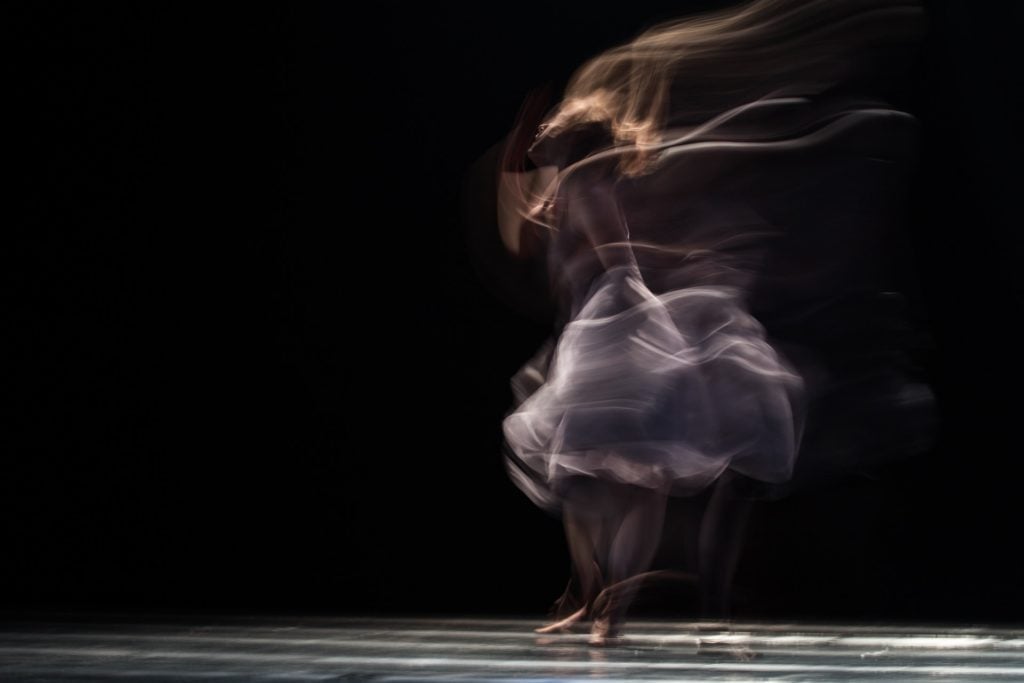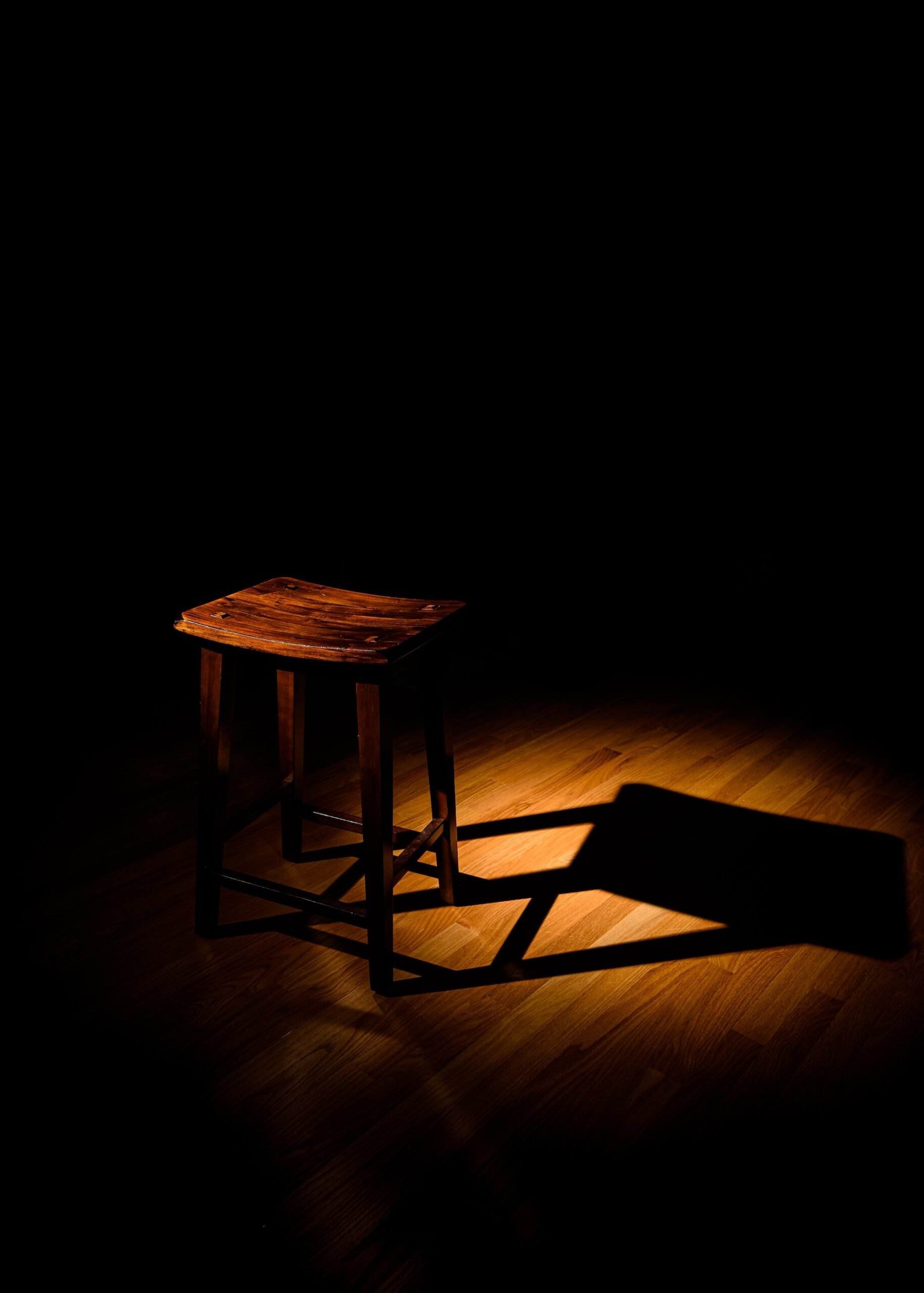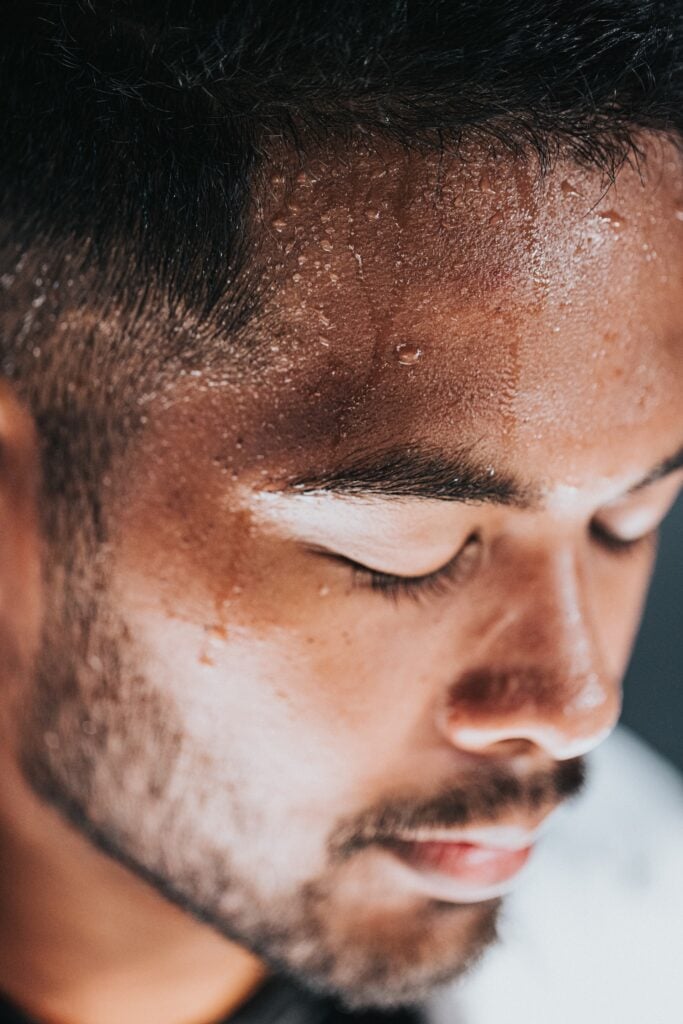
Why ‘The Invisible Actor’ is my Ride-or-Die Acting Book
When we ask someone what superpower they would choose from, the question is usually posed as such: “Would you have rather the ability to fly, have super strength, super speed or the ability to become invisible?” We never have the option of ‘losing yourself’ in that list, why? Because if you lost every part of yourself, you’d be useless in a fight. Not only is it not a superpower but it’s an actively disempowering skill – losing every part of yourself. That includes all of your senses: your ability to see, taste, touch, hear and feel. Yet as actors, the ability to lose oneself in a role is still seen as somewhat of a zenith of achievement in our craft.
“For me, acting is not about showing my presence or displaying my technique. Rather it is about revealing, through acting, ‘something else’, something that the audience doesn’t encounter in daily life. The actor doesn’t demonstrate it. It is not physically visible, but, through the engagement of the onlooker’s imagination, ‘something else’ will appear in his or her mind. For this to happen the audience must not have the slightest awareness of what the actor is doing. They must be able to forget the actor. The actor must disappear.” – Yoshi Oida – The Invisible Actor
I can only describe it as a certain feeling or sensation when, mid-performance; the research, the rehearsals and the imagination seem to fuse symbiotically. And it feels just that – sensational. I feel as though I can let go of everything and lift out of myself and see what’s happening from outside of my body. It’s a feeling I keep chasing because it’s a peculiar and liberating state to be in, yet its presence is fleeting and unpredictable.
This is why ‘The Invisible Actor’ floored me when I first read it. The concept of invisibility on stage spoke to me with absolute clarity that no other acting book had thus far in my life. It encourages you to get out of your head and into your body with a holistic approach rather than a stringent set of rules. Instead of a dogmatic approach to his process, Yoshi uses analogies about samurais, ninjas, battles, martial arts training and nature to describe our practice as actors. This book shows how an actor’s place in the theatre is no different to a ninja’s place in battle or a monk’s place in the temple – and there is a point in which each of these overlaps and intersects in theory.

It seems contradictory to say, but I’ve seen invisible actors before. I’ve seen them on film and on stage and they’re the kind of actors that are as reactive and powerful as water in all its forms. An invisible actor can be as still and calm as a millpond, as erratic as the rain and then as powerful as a tsunami all within one show, one scene or a mere moment. Yoshi Oida, with the running commentary of Lorna Marshall, describes how an actor can make embodying and shifting between the most extreme ends of the human experience seem invisible.
But first…
About Yoshi Oida
Yoshi Oida’s career began in Japan, the country of his birth. As a child actor, he explored classical Noh Theatre and continued his studying and performing in Noh, Kabuki and Gidaiyu storytelling as he grew up. He also engaged in experimental theatre with the playwright Yukio Mishima.
He left Japan and travelled to Europe in his late thirties where he met the acclaimed theatre director Peter Brook. Peter’s ideas about theatre intrigued Yoshi so much so that he packed his bags and headed to Paris to work with Peter, despite having no experience speaking French or English. Over the years in Paris, Yoshi became a force to be reckoned with – working in shows that would become the cornerstones of his career; The Ik, The Conference of the Birds, The Mahabharata, The Tempest, Fragments and The Man Who Mistook his Wife for a Hat. He has also acted in French, Japanese and American films, directed plays and now runs workshops all over the world.
Why is his approach so unique?
His technique and practice were forged in the fires of two major Japanese theatrical styles: Noh and Kabuki. Noh being minimalist in its style, utilising masks and formalised gesture – this creates a distanced sense of tragic atmosphere for the audience. And Kabuki uses more dance, singing, movement and costume to create dazzling spectacles for the audience. In these forms of Japanese theatre, performance is either; singing, dancing or speaking – rather than the western style of theatre where acting exists as a separate skill. In Japanese theatre, a performer needs to use a wide range of vocal and visual expression to help tell the story. Both styles steeped in centuries of tradition are the worlds in which Yoshi’s love of theatre was born.
Yoshi’s approach is a unique fusion of eastern and western theatre-making that encourages the performer to get out of their head and more into their body. Lorna Marshall explains “When Yoshi uses the word ‘mind’ he is not referring to the brain or the intellect. There is a single word in Japanese, Kokoro, which can be translated as either ‘mind or ‘heart’. Probably, it is best to think about it as your ‘inner self’.” Rather than thinking that our choices as actors come exclusively from our head, he wants you as an actor to know that you can make decisions from any part of our body if you really tune in and listen to it. His book provides exercises that aid you in subtle and effective ways to shift your attention exactly to where it needs to be in rehearsal and performance.
Why should I read this book?
Whether you’re starting out, in the middle of your training or the middle of your career, The Invisible Actor is accessible and enlightening regardless of where you’re at in your practice. Yoshi draws on the lessons he learnt from all stages of his training; from his formative moments playing pretend as a child right up to working and performing in Peter Brook’s company in Paris as an adult. He draws inspiration from the combination of joy and power he felt in becoming ‘invisible’ when he put on a ninja costume as a child. He wants to help any actor discover that same sense of freedom he experienced and how it can be worked into your practice.
If you feel as though you’ve hit a roadblock in your training, or your technique needs a refresh for a new project, or you simply want to feel freer as an element of theatre in the storytelling process then this is the book for you. Yoshi Oida and Lorna Marshall boil down their wealth of knowledge and skills into a lean 125 pages resulting in an approach that is unique, simple and powerful.
The Fundamentals
Yoshi breaks down his approach into 5 sections: beginning, moving, performing, speaking and rehearsing. I’ve distilled some key fundamentals from each category that have helped me in my own work, and what I feel encapsulates each of them respectively.
#1 Beginning
Cleaning:
One of the key things that can be taken away from this section is the importance of cleaning the space before rehearsing. It’s a Japanese tradition used in theatre, religion and martial arts which ritualistically prepares the mind and body for work. Clearing and cleaning the space prior to rehearsal should not be treated any differently. Treating your workspace with respect endows it as having the existence of ‘something more’ than just any old room. It can be an act as simple as clearing all the coffee cups and rubbish out of the room, sweeping the floor, or making sure there are no unnecessary objects in the space. It is a small conscious act that can make a profound difference to the approach and quality of your time in rehearsal.
The nine holes, the spine, the hara and the hands:
In Japanese tradition each orifice of the body requires attention. Yoshi gives you simple exercises to work into your practice that brings focus to the eyes, the nose, the mouth, the ears, the anus, the spine, the hara (our physical core and core of our entire self). He considers these our most powerful energy channels that need to be cleared and prepared in order to use your whole being effectively in your work.
These exercises are great to work into your own rehearsal prep or pre-show warmup. Even if you’re yet to acquire any sort of warmups you do on your own to get into the zone, these are a great place to start in order to bring awareness to your body as a complete sensorial instrument.
#2 Moving
Standing and Practicing:
Yoshi wants you to see yourself as a puppet onstage “held up and manipulated by the strings of your mind”. He explains that if your concentration wavers, the strings become slack and the performance isn’t interesting anymore. But “when the ‘thread’ remains taut yet invisible, the performance will look truthful and unmechanical: completely alive”.
In order to help this ‘tension of the thread’ on stage, Yoshi encourages you to keep the ‘tension of the soul’ through full consciousness of your whole self in daily life. This he explains, is aided by using active imagination in everyday physical tasks no matter how mundane or laborious. Active imagination and visualisation make almost any task easier as you have a separate focus for your inner concentration. I see it as working your imagination like a muscle at many points throughout the day as possible. That in turn means this muscle will be fit and strong and ready to go when you need it for rehearsal.

Directions of Movement:
Keep your 360-degree awareness on at all times.
“[…] the actor’s body exists within the unique space of the theatre, and it needs to ‘expand’ in order to fill it. As well as being aware of your skin and bones, you must be able to sense all of the directions around your body. Just stand somewhere in the performing space and ask yourself the following questions. Where is the front, the back, the side, up and down? And in relation to the audience, are you facing directly towards them, or are you standing on a slight diagonal?”
This 360-degree awareness of your body in space will give the impression you are filling the space and you belong in it rather than the space feeling like it’s swallowing you up in its cavernous size.
Sitting:
In Japanese theatre, the floor is commonly used as a place to act from in a position of seated readiness as it creates a greater visual field for the audience. As an exercise, he encourages you simply to spend time exploring how your body functions in the act of moving between sitting and standing. Try it extremely fast, extremely slow, which leg takes more of the effort, thinking of your balance, where you shift your weight and importantly – where that string of tension is.
Relaxing:
Like they do in the Noh Theatre, think of channelling all of your tension into your little finger, or the arch of your foot. When you focus your tension to these two small places it frees up your entire body to move with strength and ease. Not being one to argue with tradition I tried this the next time I got up on stage after reading this book, and I have to say this act of visualisation helped me immensely. It gives me a clear point of focus to channel my energy towards on days where I feel as though there’s so much going on that my attention is completely shot, or days where I have felt it almost impossible to drop tension I’m holding onto in the body and it’s affecting my work on stage.
Walking:
In performance, even when simply walking from one side of the stage to the other always stay in tune with your hara (centre). Oida explains:
“When you study Noh, you are constantly reminded about the importance of the hara, and this area is held open. As a result, internal energy can accumulate, which in turn keeps you physically centred and well balanced. A good actor is comfortably stable; not rigid like a tree, but soft like water”.
Tasting:
When I can’t look away from a certain performer on stage, I get the sensation that they’re ‘tasting’ each movement rather than being the most coordinated person up there.
“It is important to understand that acting isn’t only emotion, or movement, or the actions that we commonly recognise as being ‘acting’. It also involves on a fundamental level: the basic sensations of the body. One of my masters said, ‘As an actor, you shouldn’t be a theorist. Don’t be too logical or rely on intellectual understanding. Learn through the body.”
#3 Performing
Jo, Ha, Kyu and Time:
“Six hundred years ago, the Japanese Noh master, Zeami, said ‘Every phenomenon in the universe develops itself through a certain progression. Even the cry of a bird and the noise of an insect follow this progression. It is called Jo, Ha, Kyu.”
Jo, Ha, Kyu literally translates to Jo – beginning or opening, Ha – Break of development and Kyu – the sense of fast or climax. Lorna Marshall explains that Jo, Ha, Kyu is a natural rhythm different to the western ‘beginning, middle and end’ as Jo, Ha, Kyu is a smooth acceleration to a climax rather than a set of three even steps. When you feel like the pace of a play is slowing down you tune back into the Jo, Ha, Kyu. The rhythm is always there and always present, it’s up to you as an actor to keep in tune with it, the same way a singer stays constantly aware of the beat of a song. Lorna explains:
“From the audience’s point of view, there is a real sense of being constantly carried forward. There may be a variety of surface rhythms within any given performance, but the audience will never sense that the action has ‘slackened off’.”

Space:
In rehearsal, our physical choices can sometimes result in a complete lack of expression in order to keep it feeling grounded in truth or for lack of a better word, realistic. I am definitely guilty of this, and when it’s a bit off you know it immediately in your bones. But the following concept can really help you understand the effect your body has in the space onstage when you truly can’t see it for yourself.
“In daily life, you work with real distances. The chair is two metres away, so your intention is simply to walk those two metres. When you sit, you take the easiest way down. But on stage, you are playing with the full breadth of life, and so your actions have to be something more than just ‘walking two metres’ or ‘sitting down’. You don’t ‘demonstrate’ or try to make the audience see that these actions are somehow ‘Deeply Significant’. You simply imagine that the space you are working with is bigger. When you walk across the stage, in your imagination, you go to the horizon.”
Interior/Exterior:
Yoshi believes there are two elements in good acting: technical mastery, and the free and easy movement of the mind/inner self. Having these fully present in performance end up manifesting as your inner and outer expression. With attention and skill if you can find a creative contrast between your inner state and your outer expression, then we start to find the interesting, rough and frayed edges of a human’s presence. Yoshi explains:
“Balancing inside and outside. Moving without moving. Quiet but not quiet. Like riding a horse. A good rider can move very fast and cover a lot of ground, but he or she never seems agitated. The horse might be running across fields and ditches, through the forest, over the stream, and yet the rider remains tranquil and almost motionless. The actor’s mind is the rider, the body is the horse”.
Repetition:
Nourish your internal energy! How? Repetitive action. Much like those of spiritual and cultural practices; bowing, praying and chanting – repetitive movements have the effect of stimulating your internal energy which in turn tunes your sensitivity and awareness as a person. Yoshi draws this comparison with spiritual practice not at all with the intent of signalling the virtue of the task, but rather by stating the accidental discovery humans have made in seeing the effects of repeated physical action on the inner self. This can feed you as an actor. He says to be careful not to choose something that causes physical rigidity but choose a practice that encourages physical fluidity. A Yoga or T’ai Chi sequence is never a bad idea. As one of my movement teachers in drama school always said: “Supple body, supple mind.” And Yoshi’s belief is no different. Keep the movements dynamic and fluid and when you get bored, do not stop. Pushing through the boredom of repetitive physical movement can push you into a new space you’ve never been before. It is there in this new space that you can grow.
Human Energy:
Staying in connection with nature keeps you in connection with the unique human energy that makes you, dear actor, incredible to behold on stage. The more you are in connection with your unique human energy, the more you have to bring to each story you have to tell. Oida explains;
“Feeling happy or sad has an equivalent in the natural world, and human energy is linked to the energy of the physical environment. Today people imagine that they are independent of nature, and that what happens in the physical world has no influence on them. As a result, when you see the human being portrayed on stage, there is no connection to nature. But anyone who lives in an earthquake zone knows that we are very much a part of the natural world. Not even the highest technology can protect you if the earth decides to shift”.
Note each emotion that is the by-product of the scene you’re in and draw your own equivalent to a phenomenon of the natural world. Is envy the deepest hottest, bubbling lava pit of the volcano, is relief the softest mist off the top of a waterfall, is loss or love the deathly bolt of thunder striking the ground at your feet? Whichever references you conjure up in your mind are at once: unique to you as an individual artist and relatable to all who have walked this earth and have ever experienced a feeling of wonder and awe of the natural world.

Self-Observation:
Always have someone else present to observe your physical work in rehearsal, and when the performances start let the audience be your guide.
“In fact, the audience is the true mirror. I don’t really know how to act my part until I get in front of an audience. At that moment I discover my role. The rehearsal room is just the preparation that enables the discovery. The audience tells me how to play. I believe that the actor’s job is not to show what he or she can do, but to bring the audience into another time and space. A place that the audience does not encounter in daily life. The actor is like the driver of the car that transports the audience somewhere else, somewhere extraordinary. I want to serve the audience in this way.”
Body and Emotions:
Faking it til you make it is ok. As actors we are usually told that the goal is to work from the inside out, an inner state moving outwards dictating our outward appearance. But Yoshi says working purely from a place of emotion to start from is risky and unreliable. But bodily shapes on the other hand are very reliable no matter what sort of day you’ve had.
“As an actor, if I look for emotion first, I tend to panic. I think, ‘yesterday I felt genuinely sad. So today I must find that same sadness again.’ But when I try to think I am feeling sad, sadness never comes…. You take a big risk when you depend on your emotions as the basis for reproducing a scene when you have a long run. On the other hand, you can repeat a body detail in exactly the same way every day. Working from the body is useful for actors”
Try this theory with the game ‘Fake Laugh Til We Real Laugh’. If you get a room full of people to physically conjure up laughter and pretend to laugh it will always descend into actual uncontrollable laughter, and the same can be done with a scene on the opposite end of the emotional scale but in more nuanced ways.
Details:
Spend time exploring the range of your physical possibilities to ensure your body is closely linked to your interior being. And be careful not to broadly characterize your character as a general state of being too early on in the process, just so you don’t end up playing a description. Rather you want to be presenting a character full of detailed work and allow the audience to judge your character for themselves. Try a million different cues to start from and choose them wisely for your performance. Try to work with colours, images, physical cues on a macro and micro scale, imagination cues (As If’s come to mind there) as your kick-off points. Yoshi encourages you to try them all to bring as much detail and texture to your work as possible.
Tai and Yu:
When you rehearse, try to keep in constant dialogue with the Tai and Yu. We’re going back to Noh master Zeami with this one “One of Zeami’s more difficult but beautiful ideas were the division of learning into ‘fundamental structure’ and ‘phenomenon’…In poetic terms, tai is the flower, while yu is the scent. Tai is the moon, while yu is the moonlight. If, when you study acting, you concentrate on the fundamental structure – the inside – the ‘phenomenon’ – the outer expression – will emerge automatically. Very often, actors will see an ‘effect’ and decide to imitate it, but this will not produce good acting. Instead, you need to understand where that ‘effect’ originates, and what causes it to come into being”. As Yoshi explains, this will in turn bring more meaning to your work – and which actor doesn’t ever want more of that?
Relationships with other actors:
Don’t forget where joy is to be found with your fellow actors. The joy you can create with another actor is sometimes unexplainable. It’s another form of the ‘something else’ Yoshi is always describing and is something I’m a huge believer in. It doesn’t even have to be joy in each other on a social level or with each other’s persona, but joy in the fact that we are two or more people playing together on stage in.
“Actors always enjoy themselves on stage. Even when they are murdering each other, or in desolate grief, actors enjoy that situation. This in turn permits the audience to ‘enjoy’ the performance, despite the possibility that they may be in floods of tears…. In front of an audience, actors must find ways of making their ‘exchange of words’ appear believable and natural in terms of the situation of the play. The words have to make sense logically and emotionally. And since it isn’t easy to make the words of a text seem completely natural and inevitable, actors spend a lot of time understanding the psychological roots of the character or scene. But if the actors simply look for this aspect of the work and ignore their enjoyment of playing together, there is. No deep pleasure for the audience.”
And don’t we all want our audience to experience nothing short of deep pleasure when watching a show? Of course! Foster a space that is respectful to each other, respectful to the nature of the work, safe to work in, encourages play and welcomes constant offers and you’ll see just how much the audience will feel the vibe you’ve created for each other.
Our relationship with the audience:
Be ready nice and early, get into the wings and listen to the audience as they head to their seats. Really try and feel for what sort of audience they are. Every audience will be different, and a truly great invisible performer will feel that audience and make the subtlest of changes to bring the audience to where they need them to be to start the ride. It’s the job of the actors to balance out the audience with the sort of energy it requires, more yin or more yang.
“In the Noh theatre, they have a saying: ‘You must unify one thousand eyes.’ This means that the fundamental points of your performance should have the same impact on all the onlookers. Everyone should basically agree on what they’re seeing.“
#4 Speaking
Breathing:
A ballet dancer knows where they need to take in more breaths between movements before a mammoth variation, or an opera singer knows where to steal an extra snatch breath before a big final note. They map out exactly where they need to breathe to execute their work. An actor’s work should be no different, especially on text-heavy material. Once you know that text inside and out, and you’ve mapped it with breath, Yoshi suggests a focus technique to help make your breathwork appear invisible.
“There is an old saying: ‘Ordinary people breathe through the chest, wise people breath through the hara, and the skilled person breathes through the feet.’ The ‘wise person’ refers to the practice of meditation; if you do this, concentrate your breathing in the hara, the area just below your navel. The ‘skilled person’ is someone who uses their body in a highly developed way, such as an actor, or martial artist. People in these fields use the image of getting energy of the earth to help them”
He encourages you to imagine that air travelling up through your feet and when you exhale the air it exits through the tan-den (the core point of your hara about three centimetres below your navel). This is keeping the focus on the breath where it needs to be: away from your neck, chest and upper back. But utilising your legs, pelvic floor and core muscles helps you breathe onstage supported and without damaging your vocal cords.

*In this section, there’s an awesome story about how Yoshi, one day, whipped a flying somersault out of absolute nowhere while doing a Peter Brook workshop in the Sahara. It’s well worth the read for that story alone. Just an FYI!
Sound:
In this section, Lorna and Yoshi run you through some simple and effective vocal exercises that help you to feel vowels and consonants on a vibrational level and to help map and understand where they resonate in your body. They’re what I call ‘pre-warm up warm-ups’ and are excellent for getting the engine going before your ride or die vocal warm-ups. As they’re very simple, and require you to feel more than listen, I find they also work as a sort of meditation (of which I’m feeling I need more of before performing these days). “According to Japanese esoteric Buddhism, when you are born, you make the simple clear sound ‘aaaah’ like a god. As time passes, and you become ’educated’ and skilled in responding to the demands of society, you become a character with an appropriate vocal style. The open clear ‘aaah’ is gone. And then you spend the rest of your life, working to recover the first pure ‘aaah’, hoping to retrieve your innate divinity.”
Text:
Yoshi doesn’t want you to focus on having a ‘nice’ voice. But rather to focus on the logic and sense of the line itself. As he’s usually performing in English or French these are not his first languages, and he doesn’t consider himself a strong linguist so he doesn’t usually get big parts – which is frustrating for him, naturally. But it means he has to focus so hard on the grammar and logic of the line that it gives his work a certain edge compared to actors who speak English or French as a first language. He suggests to just try and keep your vocal range as open as possible by not locking into one emotional possibility when learning your lines, try experimenting with arbitrary offers first and see what sticks. “In Japan it is said that a good storyteller won’t have a particularly beautiful voice. if you have a beautiful voice, you feel safe, and as a consequence, you don’t work hard enough at getting the story across”
Reflecting Reality:
As a tool to help you understand the structure of a play, Yoshi suggests working backwards:
“Like a mystery novel it has structure. And like a mystery novel, it is sometimes helpful to look at the ending in order to work out the beginning. If the ending is like ‘that’, then the beginning needs to be ‘this’, and the next step ‘so’. It’s like a puzzle. But you can ‘cheat’ by looking at the end in order to find out how to solve it. from end to start to middle is a good way to proceed.”
On emotional truth, sometimes we as actors need to reckon that fact that how we feel while doing a scene doesn’t not always accurately reflect what the scene requires. In my case, this can be – hilariously – a lot of the time.
“Before you think about generating an emotion, you should examine what you need to do in terms of rhythm and timing. In fact, if you construct your tempo properly, the emotion will arise quite easily.”
Yoshi doesn’t want you to shy away from novelty! Rejoice! But he means this in a way that connects acting back to nature. Nature never stays the same and neither should our performance.
“I would like to make it clear that the concept of ‘novelty’ does not mean that you search for weird, shocking, bizarre performances. It is not ‘change for the sake of change’. Rather, it is finding ways to keep your work fresh and alive. From the audience’s point of view, a play that has true ‘novelty’ won’t necessarily appear strange and shocking. Instead, they will be so absorbed and moved by what they’re seeing, that they will be unaware of the fact that they have seen a good performance.”
Anything that keeps the audience focused on story and not specifically you and your craft should always be the way forward.
#5 Learning
Stay curious, try other skills and embrace your hana (we’ve all got one). Lorna Marshall explains the hana:
“Zeami called this quality hana, ‘the flower’ of a performer, and included the sense of ‘charm’ and ‘novelty’ in its meaning. This ‘charm’ is not the same charm that we see in daily life, which is a type of social ease. Nor does it mean physical beauty. It refers specifically to a particular quality of the performer on stage.”
Understand your unique hana, and then do everything in your power to not fall back on riding that charm alone. Don’t be seduced by it, constantly work on developing your technique physically and vocally. Keep a balance between the skills you have been taught and the hana you withhold that cannot be taught.
In your pursuit of learning and service to a story just be ready to “… destroy previous methods of performing, in order to create what is needed here and now. When you are actually on stage, you must forget about all the theories, all the philosophies, all the interesting techniques. Just do it.”
Be honest, be open, be generous….be a plate:
“A Chinese sage was answering his student’s questions. One of the questions was, ‘What am I?’ The sage replied, ‘You are a plate.’ In eastern religious ceremonies, a special pate is used to hold the offerings made to the gods, the plate supports the precious objects…. In describing his student as a plate, the sage was reminding him of this deeper level of existence. In the same way, the invisible part of the actor is the plate that gives rise to and supports the visible action of the performance. you don’t notice its presence, only its absence.”
Some Final Words…
Like myself and every other performer/writer in this world who offers suggestions and advice to other performers, Yoshi finishes by giving you the freedom to go against what he says. And in some ways, I do. There are some stances he takes on the life span of an actor, at what age you ‘peak’ and when you should give up pursuing it as a career if it’s not going according to plan. This is something I actively disagree with. I believe anyone can act, and everyone has a certain amount of mongrel within them that refuses to take another rejection as a sign they should stop pursuing what they love. And in turn, can constantly search for technical improvement and finding a way to fall back in love with the craft when the hustle clouds what they loved about acting in the first place.
But despite this, The Invisible Actor spoke to me like no other, and I have immense respect for this book and the approach to acting it endeavours to foster in its reader. Sometimes when you know, you know. And right now, what I do know in my bones is that it’s worth any actors spare time on their commute. Until then, I hope that this article can be your gateway drug into the real thing if it’s currently on loan at your local library and/or you’re hesitant to buy it. And just when you thought I’d run out of quotes, I thought I’d leave you with one of my top ten quotes to ponder on your way to wherever you’re headed in your craft.
“There was a famous Kabuki actor, who died about fifty years ago, who said, ’I can teach you the gesture pattern that indicates “looking at the moon”. I can teach you the movement up to the tip of the finger which points to the sky. From the tip of your finger to the moon is your own responsibility.”
When you get yourself a copy, I hope you enjoy learning how to become invisible on stage and screen. And when you’re in full flight, use those powers wisely!

Leave a Reply